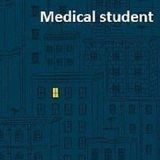

What are different types of aphasia?
A)Nonfluent aphasia. Damage to the language network near the left frontal area of the brain usually results in Broca aphasia, which is also called nonfluent aphasia. People with this disorder struggle to get words out, speak in very short sentences and leave out words. A person might say \"Want food\" or \"Walk park today.\" Although the sentences aren't complete, a listener can usually understand the meaning. A person with Broca aphasia may comprehend what other people say to some degree. People with this type of aphasia are often aware of their own difficulty in communicating and may get frustrated with these limitations. Additionally, people with Broca aphasia may also have right-sided paralysis or weakness. B)Fluent aphasia. Wernicke aphasia is the result of damage to the language network in the middle left side of the brain. It's often called fluent aphasia. People with this form of aphasia may speak fluently in long, complex sentences that don't make sense or include unrecognizable, incorrect or unnecessary words. They usually don't comprehend spoken language well and often don't realize that others can't understand what they're saying. C)Global aphasia. Global aphasia results from extensive damage to the brain's language networks. People with global aphasia have severe disabilities with expression and comprehension.


